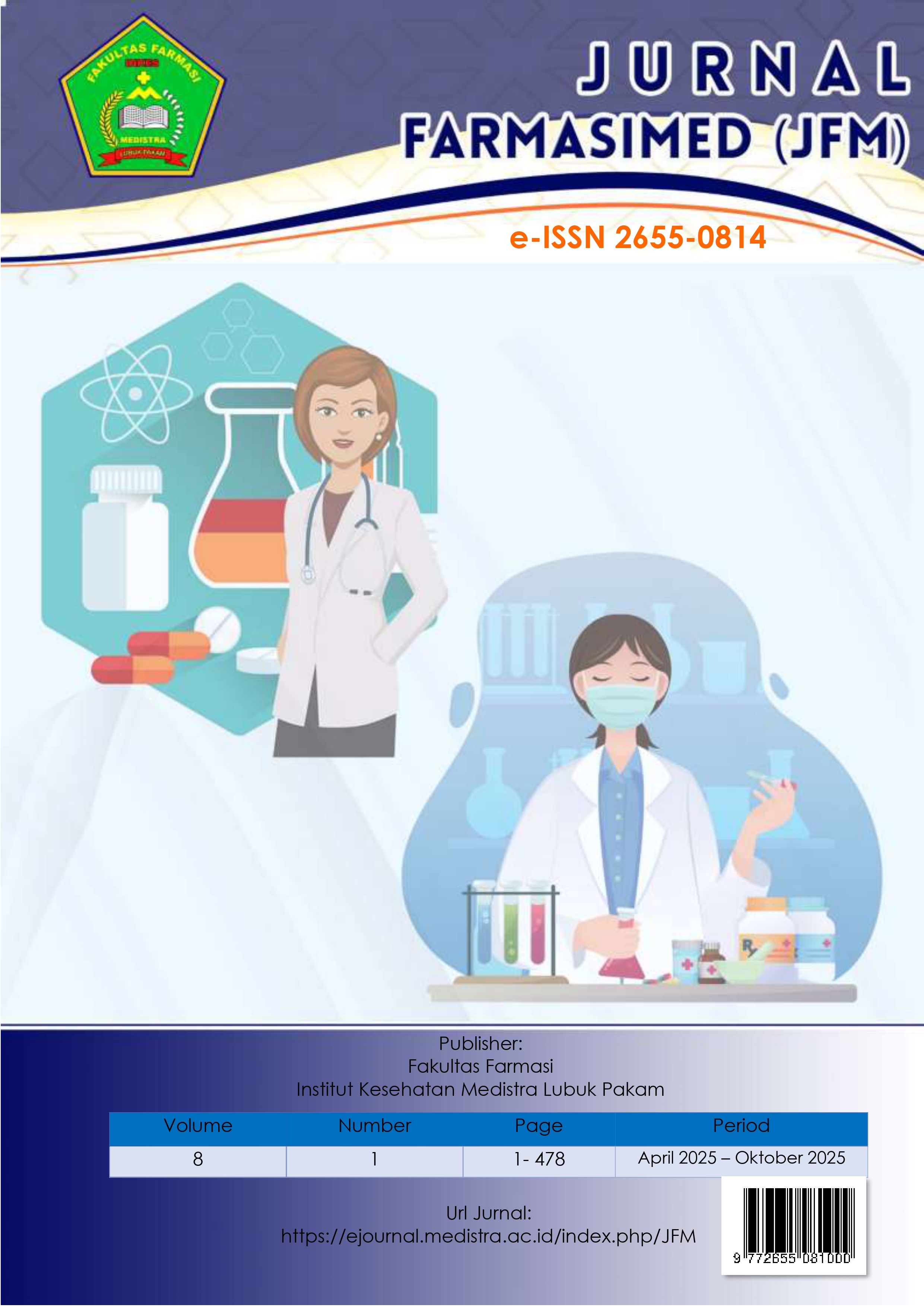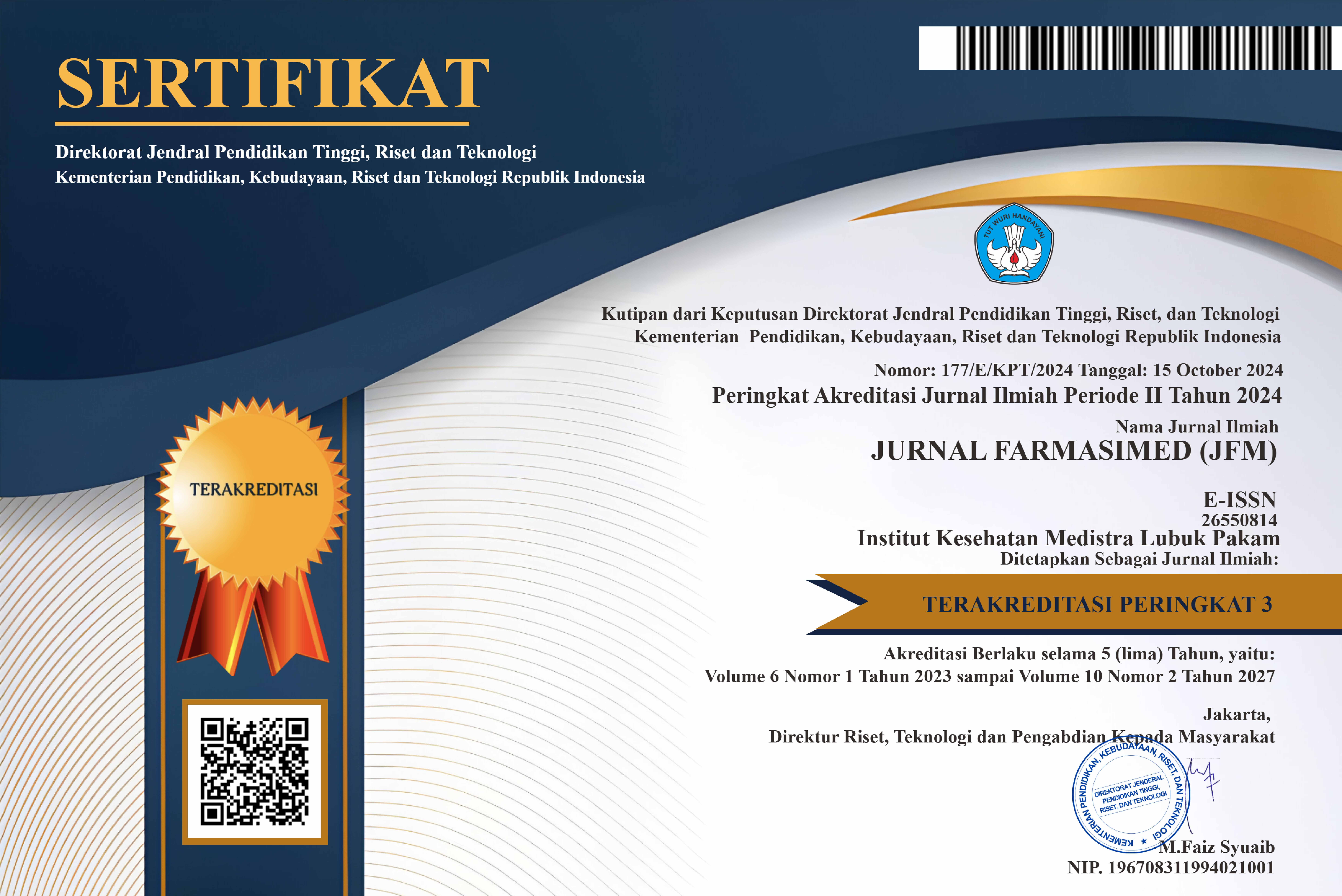The Potential of Durian (Durio zibethinus) Fruit Peel Extract on Blood Pressure, SOD, and hsCRP Levels in Male Wistar Rats
DOI:
https://doi.org/10.35451/6fhzjm83Keywords:
Antihypertensive, hs-CRP, Durian Peel, SOD, Blood PressureAbstract
Hypertension remains a major global health problem and is recognized as a leading risk factor for cardiovascular disease. Its pathogenesis involves complex mechanisms, particularly oxidative stress and chronic inflammation. An imbalance between free radical production and endogenous antioxidant defense, especially the enzyme Superoxide Dismutase (SOD), leads to endothelial dysfunction and elevated blood pressure. In parallel, inflammatory mediators such as interleukin-6 (IL-6) and high-sensitivity C-reactive protein (hs-CRP) play important roles in the progression of hypertension. Although conventional therapies are effective, they are often associated with side effects and long-term costs, prompting interest in alternative treatments derived from natural resources. Durian peel (Durio zibethinus), usually considered waste, is rich in bioactive compounds such as flavonoids, alkaloids, tannins, and saponins with potential antioxidant and anti-inflammatory effects. This study employed a true experimental design with a post-test control group using male Wistar rats induced with hypertension by L-NAME administration. Animals were randomized into five groups: negative control, positive control (captopril), and three treatment groups with different extract doses. Assessments included blood pressure measurement, SOD activity, IL-6, and hs-CRP levels. Results demonstrated that durian peel extract contained an average flavonoid level of 16.27 mg QE/g with moderate antioxidant activity (IC50 88.90 µg/mL). The highest dose (800 mg/kgBW) reduced blood pressure by 14.2 ± 3.90 mmHg, approaching the effect of captopril (15.03 ± 6.30 mmHg). Moreover, SOD activity increased, IL-6 levels declined at medium to high doses, and hs-CRP levels decreased significantly, nearly comparable to the positive control. In conclusion, durian peel extract shows potential as an antihypertensive agent through mechanisms involving enhanced antioxidant defense and reduced systemic inflammation.
Downloads
References
[1] H. S. Z. Bahrami et al., “Association between interleukin-6, suPAR, and hsCRP with subclinical left ventricular dysfunction in type 1 diabetes: The Thousand & 1 study,” Diabetes Res. Clin. Pract., vol. 222, p. 112071, Apr. 2025, doi: 10.1016/j.diabres.2025.112071.
[2] S. Cao, L. Li, H. An, G. Mao, J. Dai, and Y. Ma, “Development of dual-mode ELISA based on ALP-catalyzed APP hydrolysis for IL-6 detection,” J. Pharm. Biomed. Anal., vol. 236, p. 115754, Nov. 2023, doi: 10.1016/j.jpba.2023.115754.
[3] V. Donoso-Bustamante et al., “Antioxidant activity of sinapic acid anilides: DPPH, ABTS, FRAP, electrochemical and theoretical analysis,” LWT, vol. 222, p. 117656, Apr. 2025, doi: 10.1016/j.lwt.2025.117656.
[4] B. Han et al., “The effect of sour cherry consumption on blood pressure, IL-6, CRP, and TNF-α levels: A systematic review and meta-analysis of randomized controlled trials sour cherry consumption and blood pressure,” J. King Saud Univ. - Sci., vol. 32, no. 2, pp. 1687–1693, Mar. 2020, doi: 10.1016/j.jksus.2020.01.002.
[5] A. Mazurakova et al., “Flavonoids exert potential in the management of hypertensive disorders in pregnancy,” Pregnancy Hypertens., vol. 29, pp. 72–85, Aug. 2022, doi: 10.1016/j.preghy.2022.06.007.
[6] T. Motlhalamme, A. G. Kaningini, R. Maropeng, F. T. Thema, K. C. Mohale, and M. Maaza, “Tomato lycopene, total flavonoids, vitamin C content and mineral composition as affected by biosynthesized calcium carbonate nanoparticles foliar application,” J. Food Compos. Anal., vol. 139, p. 107173, Mar. 2025, doi: 10.1016/j.jfca.2024.107173.
[7] A. Wiriyarattanakul et al., “Comparative Study of Machine Learning-Based QSAR Modeling of Anti-inflammatory Compounds from Durian Extraction,” ACS Omega, Feb. 2024, doi: 10.1021/acsomega.3c07386.
[8] Y. Zhan et al., “Chemical constituents and pharmacological effects of durian shells in ASEAN countries: A review,” Chinese Herb. Med., vol. 13, no. 4, pp. 461–471, Oct. 2021, doi: 10.1016/j.chmed.2021.10.001.
[9] O. O. Nsor, B. A. Alabi, J. A. Badejo, F. Afolabi, O.-A. Nku-Ekpang, and E. O. Iwalewa, “Soursop leaf extract and fractions protects against L-NAME-induced hypertension and hyperlipidemia,” Front. Nutr., vol. 11, Aug. 2024, doi: 10.3389/fnut.2024.1437101.
[10] S. Prasad, K. Younis, and O. Yousuf, “Investigating potent cardioprotective compounds as ACE inhibitors in Saraca asoca,” Toxicol. Reports, vol. 13, p. 101731, Dec. 2024, doi: 10.1016/j.toxrep.2024.101731.
[11] L. Strohm et al., “CD40-TRAF6 inhibition suppresses cardiovascular inflammation, oxidative stress and functional complications in a mouse model of arterial hypertension,” Redox Biol., vol. 80, p. 103520, Mar. 2025, doi: 10.1016/j.redox.2025.103520.
[12] C. Su, Y. Zhou, G. Xu, K. Xue, G. Wang, and E. Dang, “Tungsten-rosmarinic acid nanoenzyme with SOD mimetic activity for the treatment of psoriasis by eliminating ROS and relieving inflammation,” Chem. Eng. J., vol. 499, p. 156542, Nov. 2024, doi: 10.1016/j.cej.2024.156542.
[13] T. Sun, Z. Ma, L. Gao, Y. Wang, and H. Xie, “Correlation between Sarcopenia and Arteriosclerosis in Elderly Community Dwellers: A Multicenter Study,” J. Nutr. Heal. aging, vol. 25, no. 5, pp. 692–697, May 2021, doi: 10.1007/s12603-021-1624-4.
Downloads
Published
Issue
Section
License
Copyright (c) 2025 Hasni Yaturramadhan Harahap, Chandra Pranata

This work is licensed under a Creative Commons Attribution-NoDerivatives 4.0 International License.
Copyright in each article is the property of the Author.

























